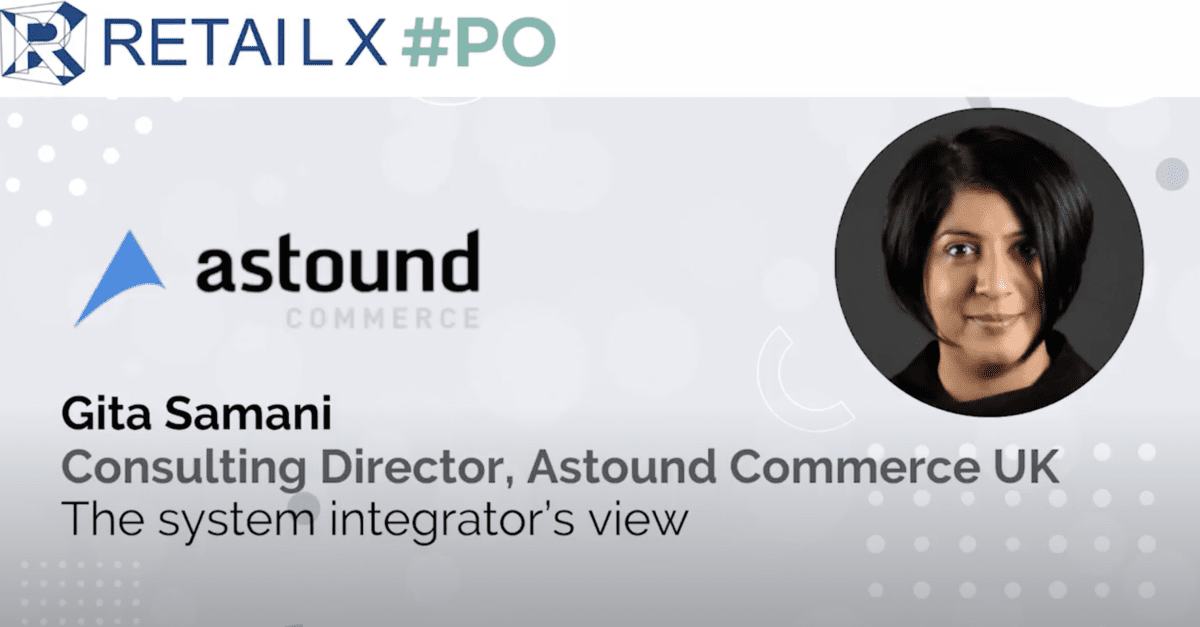Special guest Gita Samani, consulting director at Astound Commerce is back with us at #PO! But this time, sharing privileged insight into the complex world of payments. Carry on reading to find out what you missed and discover more about everything from Payment Service Providers, through to semi-skimmed optimisation…
On changing payment set-up
“I think it’s really important to understand why. Is there a clear dropout in your check out? Is there a challenge in reconciliation? Is this being driven by finance? Is this driven by ecom? Where is that driver coming from?
“Especially when it comes to changing a PSP (payment service provider). It could be that you have a separate fraud solution to a different backend reconciliation solution, that you just want to have something all encompassing.
“Or it may well be that you’re looking to extend in different markets and therefore you need to be relevant to that consumer in that market, that you’re looking for an alternative payment method for that space. It’s about really understanding those business drivers, but also those customer drivers.
“Payment methods have changed seismically in 2020. Consumers have driven how they want to shop and pay and retailers need to adapt and adopt.”
On planning
“I think engagement is key; so engagement not just on the storefront but also with your finance business partners as well. Understanding why you want to change – is it because you’re not getting enough from your fraud provider, which may be integrated or it may not be.
“Is there a challenge with authorisation rates; have you had major abandonment issues due to a hosted payment page, for example? There’s a whole raft of reasons you may choose to change your service provider and understanding what those business objectives and KPIs are, is a real starting point.
“Then dissecting that back into what the experience needs to be – you don’t need to change your whole check out to change your PSP. Clients sometimes want to do a checkout redesign and then add in their PSP at the same time…try not change too much and try and do it in a controlled way, so when you’re thinking about the PSP – think about why you want to change it and what you really need to think about on that billing page and payment page.
“Dissecting that to the nth degree is really important.”
What does the modern take on a check out page look like?
“Customer data will drive that for you. If you don’t have your own, there are studies out there that will tell you which payment types to use per market. Your PSP will be able to showcase what’s right for that page; i.e. what’s the order of payment methods? Think about the UX; the UX of selecting that payment type. Think about simple things like entering card details to recognise the type of card you’re entering…things like that.
“There’s so many advancements in the user experience now on those payment pages, that your PSP or your planned PSP will be able to provide that for you and if they don’t – think about considering someone else.”
What trends are you seeing?
“I think, thinking about the category in the first instance. So what are you going to enable consumers to buy from your category in an easier way, but thinking also about your demographic as well. There’s an article that’s just come out recently on how the younger generation are struggling to pay for Buy Now Pay Later…so is that the right demographic for you.
“There are various models within Buy Now Pay Later; there’s pay in three, pay in by weekly installments etc. It’s really quite interesting to understand what’s going to work for your customers. When you see Klarna for example and a clear pay – do you need a zip? What’s the proposition that you want to go after? And actually, what’s right for your consumer and your demographic that you’re going after? That’s important.
“In terms of the trends that we’re seeing, it’s not necessarily about being the ‘cool kids’ – it’s about removing barriers to purchase and sometimes when you’re paying a holiday, for example, a pay in three may be so much easier than paying for a top from Topshop. It really does depend on the category.”
On the importance of finance
“Don’t ever forget about finance. Their ability to do reconciliation; their ability to reduce processing costs; the reduction in fraud and chargebacks – they will have their own KPIs which you’ll need to bring into thinking about Payment Service Providers.”
On next steps
“When you implement something digitally these days, it should always be the start of a journey. You should always be looking to optimise. If you think you’ve done the full fat version; rather than the semi-skimmed or the skimmed version, there are always optimisations to be gained. So looking at the analytics, making sure that it’s tagged, making sure you’re achieving that business case – are there any opportunities you can find?
“When you think about it, when you add a different type of payment – say you’re adding an Amazon or a PayPal express – always consider the user experience with what you’ve already got.
“You never stop still. It’s always evolving and that’s just from a storefront. You know, measure the chargebacks, measure the successes for your finance teams as well…”
Final insight
“Putting payments in isn’t just about finance and ecom – there’s marketing as well. Making sure you’re joined up with that experience and that story is really important.”









